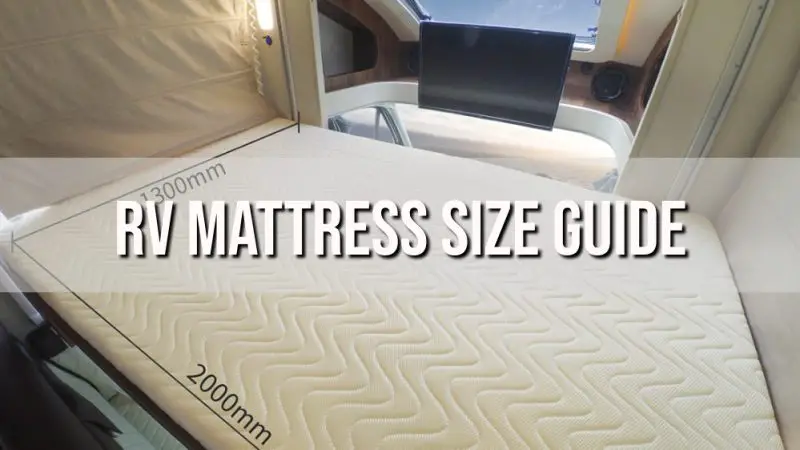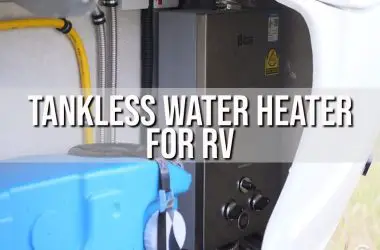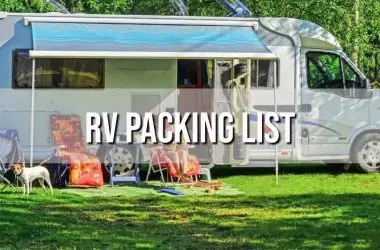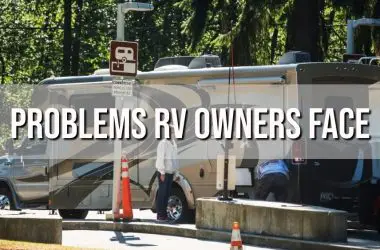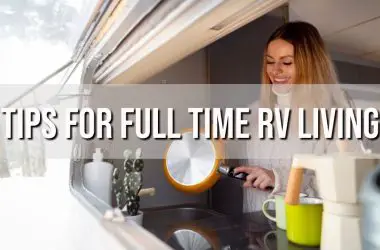RV mattress size is an important consideration when outfitting your recreational vehicle for comfortable sleeping accommodations. The confined spaces of most RVs require mattresses tailored to fit RV floorplans, bunks, cabovers, and odd dimensions not found in regular homes. RV mattresses come in unique sizes like short queen, RV twin, short king, and custom cuts to perfectly fill bed platforms.
This RV mattress size guide covers standard measurements for common RV beds, tips for sizing mattresses precisely, size conversion charts, how to measure your own bed, and recommendations for sheets and bedding. Understanding the difference between home mattress sizes and specialty RV sizes will ensure you select the properly fitting mattress ready for restful nights during your travels.
Key Takeaways
- RV mattresses come in unique sizes like short queen 60”x75” and RV twin 28”x75”.
- Carefully measure bed length, width, depth to get your exact mattress dimensions needed.
- Charts convert RV sizes like short queen to home sizes like twin XL.
- Allow 1-2” extra width/length to prevent compression gaps. Maximize thickness.
- Shop specialty RV stores for tailored sheets. Deep pockets accommodate mattress height.
- A too-small mattress wears out faster and causes pain. Precise sizing equals comfort.

Common Standard RV Mattress Sizes
Unlike home mattresses that come in standard sizes like queen and king, RV mattresses are made in specialty sizes to maximize comfort in limited spaces. Here are the most common dimensions:
Short Queen – 60” x 75” – Fits smaller RV beds
RV Twin – 28-30” x 75” – For compact RV bunk beds
RV XL Twin – 30” x 80” – Long twin for extra tall bunk sleepers
Short King – 72” x 75” – Perfect split fit for opposing RV bunks
RV Full – 54” x 75” – Full size adapted shorter for RVs
Custom Cut – Any size – Made to your exact RV bed dimensions
RV mattress sizes are typically cut shorter in length and more narrow than traditional home mattress sizes. Carefully measuring your actual bed platform is the only way to ensure a perfect fit. Many RV retailers sell mattresses purpose-made for RVs.
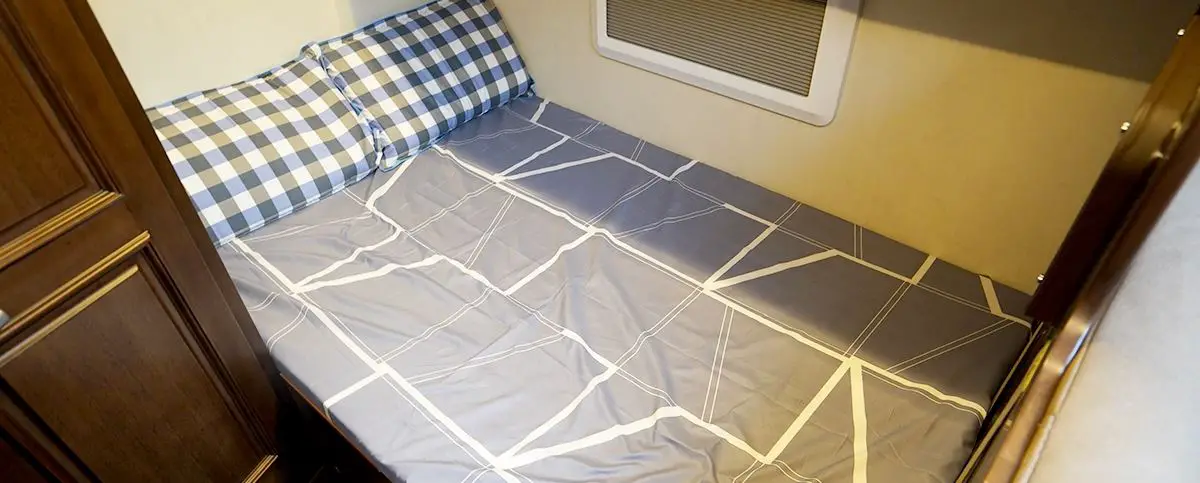
RV Bed and Mattress Size Conversion Chart
This handy reference chart converts common RV mattress sizes to the closest equivalent standard home mattress sizes:
| RV Mattress Size | Equals Home Size |
|---|---|
| Short Queen 60” x 75” | Between Twin XL and Queen |
| RV Twin 28-30” x 75” | RV Twin (No Home Equivalent) |
| RV XL Twin 30” x 80” | Twin XL 38” x 80” |
| Short King 72″ x 75″ | King without footboard |
| RV Full 54” x 75” | Full 54” x 75” |
While not exact matches, these conversions give an approximation for sizing purposes. The shortened lengths and widths of RV mattresses make an exact comparison difficult. Knowing general size equivalents helps when shopping for sheets.
Measuring RV Bed Dimensions
To determine the perfect mattress dimensions for your particular RV bed, carefully measure the bed platform length, width, and height:
- Length – Measure interior end-to-end length with tape measure.
- Width – Measure interior side-to-side width.
- Height/Depth – Measure from surface to ceiling to gauge mattress thickness allowance.
Compare your measurements against standard RV mattress sizes listed above to identify the closest fit. If an exact match doesn’t exist, order a custom-cut mattress tailored to your bed’s specifications.
Be sure to measure any curved beds or beds with wheel wells at multiple points along the surface to account for inconsistencies. Every inch counts when getting RV mattresses to fit just right. Jot down the measurements to reference when ordering.
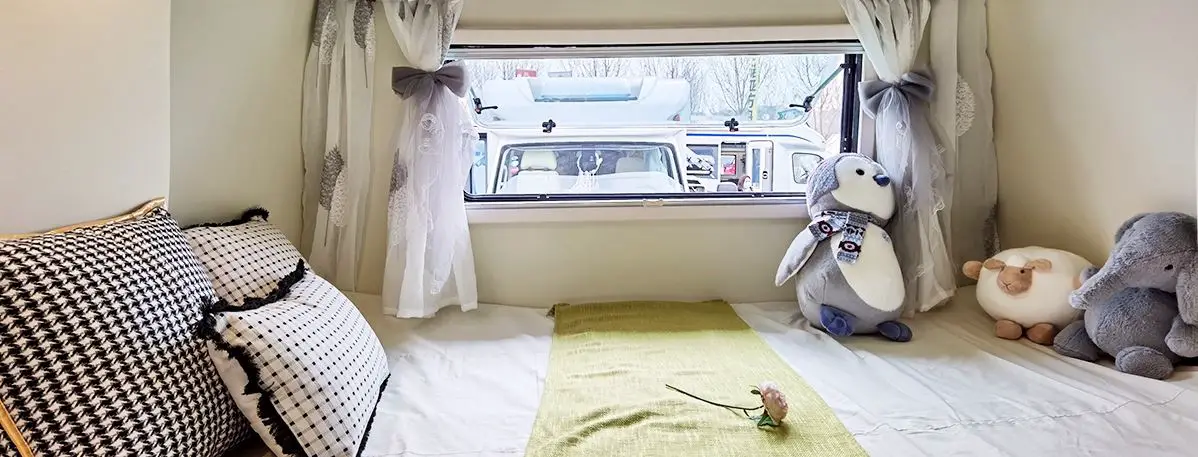
Allow Extra Width and Length
When taking measurements of your RV bed or mattress platform to determine the perfect new mattress dimensions, it is highly recommended to add an extra inch or two in both width and length beyond the exact interior bed dimensions. Building in this slight size increase serves several purposes and prevents the mattress from feeling too cramped or compressed over years of continuous use.
One major reason to size up slightly when ordering an RV mattress is that all mattress materials compress and settle to some degree over an extended period of time. This compression sinks the edges in noticeably. By allowing an extra inch of mattress width and length beyond the frame, this sensation of sinking into the edges will be reduced over long-term ownership. The extra inch provides a buffer zone.
Sizing up also helps compensate for mattress edge collapse that occurs when occupants sit along the sides of the bed or shift repeatedly to the edges while sleeping. Without that extra inch of overhang around the perimeter, this repeated edge compression can cause premature wear and mattress breakdown along the sides.
Increasing width and length additionally minimizes irritating gaps that may form between the mattress and RV bed platform if the mattress dimensions shrink unevenly in some areas over the years. Mattresses don’t always compress exactly equally, so a margin for error is helpful.
Having ample mattress size also enables bedding like fitted sheets, mattress pads and blankets to overhang just slightly for a tidier, neatly made-up look. A moderate overhang fills out the bed visually.
Finally, purchasing an RV mattress with inches to spare in width and length eliminates the need to trim the mattress down the road if the bed frame dimensions ever change slightly. Matresses expand and contract some based on temperature and humidity as well.
As long as the extra inch or two of overhang does not impede walkways around tight RV sleeping spaces, erring on the side of more generous width and length when possible is recommended to provide a comfort buffer. This also maximizes the mattress’s useful lifespan by reducing compression and collapse issues. Just take the actual bed’s interior measurements, then size up an inch or two all around when ordering the RV mattress for optimal comfort.
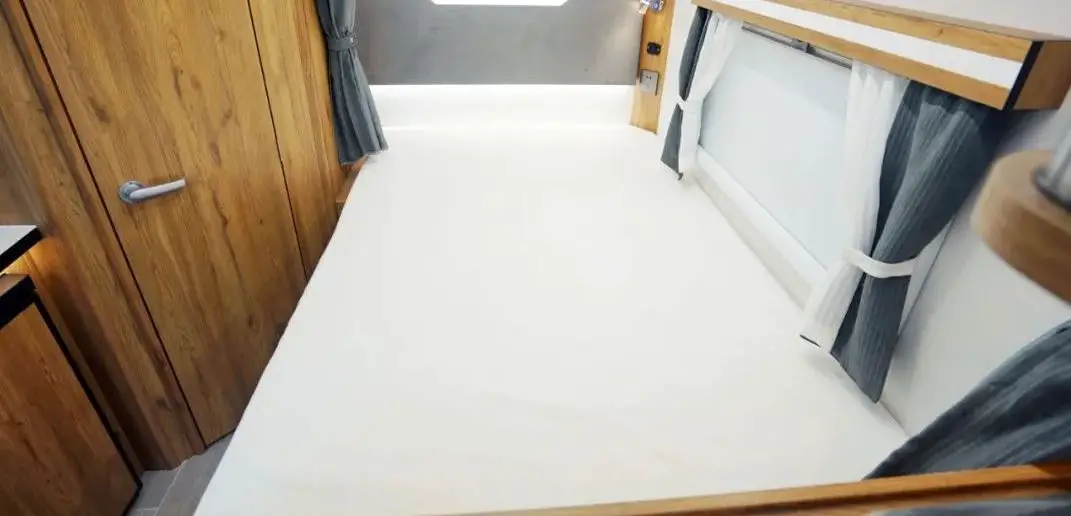
Maximize Mattress Height/Thickness
In situations where the length or width of an RV mattress must be reduced from standard sizes to properly fit a particularly confined bunk or bed frame space, you can help compensate for the smaller footprint by maximizing the mattress height/thickness to the upper clearance limit. While you may not be able to achieve your ideal mattress length or width due to tight RV dimensions, using every available inch of height/thickness to your advantage helps provide essential cushioning and comfort even when the overall footprint is smaller.
Some guidelines for maximizing thickness include choosing the very tallest mattress height that will still physically fit into the bunk or bed platform space. Carefully measure from the surface to the underside of upper bunks or the ceiling to calculate total clearance. Often an 8 inch thick mattress is ideal, but sometimes 6 inches may be the maximum workable height for tight spaces. Go as thick as clearance reasonably allows.
Replacing an old, sagging RV mattress with less than 6 inches of cushioning with a new plush pillowtop mattress up to 8 or 10 inches thick can dramatically increase comfort in the bed even if you are limited on length or width. Those extra inches of cushioning provide pressure relief.
If the existing mattress is simply too thin but replacing the whole mattress is not feasible, adding a thick premium mattress topper can increase the overall effective thickness by 2-3 beneficial inches or more. Toppers are an easy, affordable way to improve an uncomfortable thin RV mattress.
In bunk beds or other settings where less RV mattress length or width is unavoidable due to the confined space, make the most of the precious height allowance by maximizing thickness and padded layers. This will help compensate for the smaller footprint. Just beware of upper bunks that may have very tight clearance limits restricting mattress height. Always measure first before purchasing to ensure the mattress will actually fit.
Making the most of every possible inch of thickness available helps improve sleep comfort when RV mattress length and width must be reduced from standard sizes. Prioritize thickness where you can.
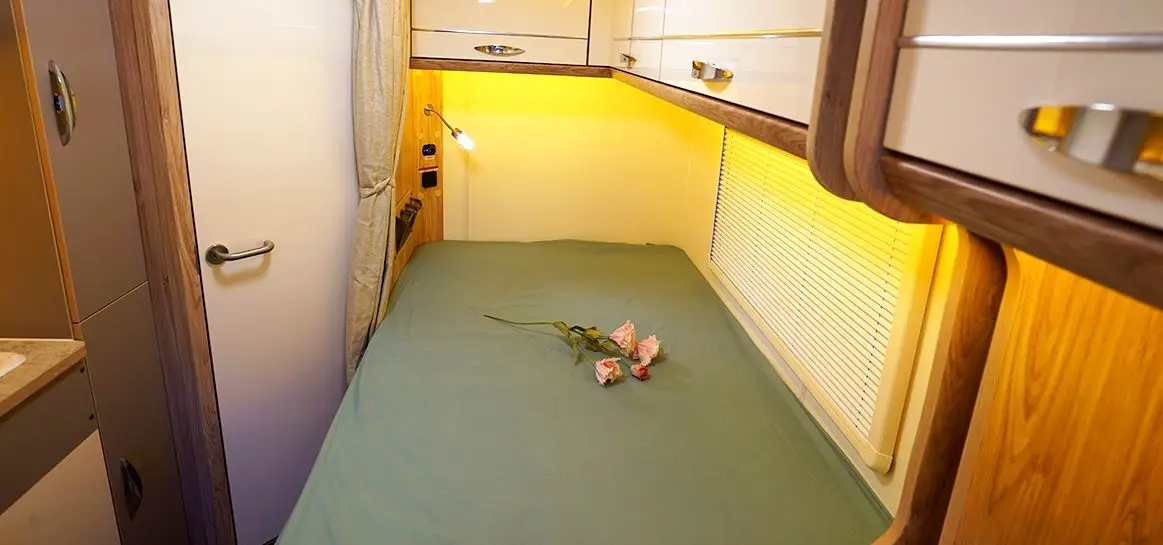
Finding Sheets and Bedding for RV Mattresses
The unique sizes of RV mattresses make finding properly fitting sheets and bedding essential. Here are some tips:
- Check specialty RV dealers and manufacturers for sheets made specifically for RV beds. Many offer short queen and RV twin sizes.
- Bring your precise mattress measurements when sheet shopping to get an exact width/length match.
- Look for deep pocket fitted sheets at least 14 inches to fit today’s thicker mattresses and toppers.
- Try twin XL sheets for RV XL twin bunks. Full sheets likely won’t be long enough.
- Get creative with bedding colors and patterns to decorate the often neutral RV sleeping space.
- Mattress encasements provide a tight wrinkle-free layer under sheets.
- Measure and cut sheets down if needed for narrow mattresses like RV twins.
With RV-tailored sheets and bedding, you’ll avoid frustration trying to fit home sheet sizes onto the differently shaped RV beds.
Typical RV Bed and Mattress Size Dimensions
To summarize standard RV mattress and bed sizes, here is a quick reference chart:
| Bed/Mattress | Width | Length |
|---|---|---|
| Short Queen | 60 inches | 75 inches |
| RV Twin | 28-30 inches | 75 inches |
| RV XL Twin | 30 inches | 80 inches |
| Short King | 72 inches | 75 inches |
| RV Full | 54 inches | 75 inches |
Use these RV size guidelines when selecting mattresses for your motorhome, travel trailer, camper van or bunk beds. Knowing accurate dimensions ensures the perfect fit.
Conclusion
Understanding the different mattress size standards for RVs compared to home beds ensures you get the perfect fitting mattress tailored to your recreational vehicle. Carefully measure your bed platform, order mattresses inspecialty RV sizes like short queen or RV twin, and size up 1-2 inches if possible. Finding mattresses and bedding made specifically for the unique shapes and dimensions of RV accommodations results in superior comfort and rest on your travels.
Frequently Asked Questions About RV Mattress Sizes
What RV mattress size should I get for a queen bed?
For most RV queen beds, a 60 x 75-inch short queen size will fit best. Always double check your measurements to confirm.
What size sheets fit RV mattresses?
RV twin and short queen sheets can be found at specialty RV outlets. Twin XL also fits longer RV XL twins. Deep pocket sheets work with thick mattresses.
How do RV mattress sizes differ from home sizes?
RV mattresses are cut shorter and narrower than traditional mattresses. A short queen is 5 inches narrower and 15 inches shorter than a regular queen.
Why are RV mattresses different sizes?
The confined spaces in RVs require narrower and shorter mattresses sizes to fit while maximizing comfort. Standard home sizes won’t correctly fit most RV beds.
What size is a bunkhouse mattress in an RV?
For RV bunk beds, the standard size is an RV twin at approximately 28-30 inches wide by 75 inches long. RV XL twin at 30 x 80 inches accommodates tall sleepers.
Should I size up when ordering an RV mattress?
Sizing up 1-2 inches in width and length helps reduce compression gaps and gives a comfort buffer. Just ensure overhang doesn’t obstruct walkways.
What is the difference between a short queen and RV queen?
A short queen is 60 inches wide x 75 inches long to fit RVs. A RV queen is more similar to a standard home queen size around 60 x 80 inches.
How thick can an RV mattress be?
Measure bed platform height to ensure enough clearance for mattress and bedding layers. At least 8 inches thick is ideal, but RV beds may only accommodate 6 inches.
Where can I find sheets for odd RV mattress sizes?
Specialty RV dealers offer sheets in RV-specific sizes like short queen and RV twin. They are also skilled at finding bedding for unique sizes.


